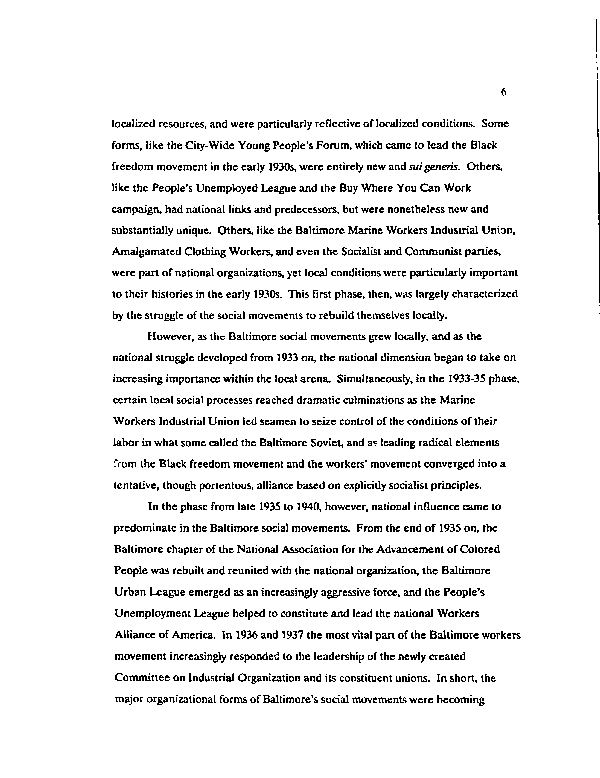|
localized resources, and were particularly reflective of localized conditions. Some
forms, like the City-Wide Young People's Forum, which came to lead the Black
freedom movement in the early 1930s, were entirely new and sui generis. Others,
like the People's Unemployed League and the Buy Where You Can Work
campaign, had national links and predecessors, but were nonetheless new and
substantially unique. Others, like the Baltimore Marine Workers Industrial Union,
Amalgamated Clothing Workers, and even the Socialist and Communist panics,
were pan of national organizations, yet local conditions were particularly important
to their histories in the early 1930s. This first phase, then, was largely characterized
by the struggle of the social movements to rebuild themselves locally.
However, as the Baltimore social movements grew locally, and as the
national struggle developed from 1933 on, the national dimension began to take on
increasing importance within the local arena. Simultaneously, in the 1933-35 phase,
certain local social processes reached dramatic culminations as the Marine
Workers Industrial Union led seamen to seize control of the conditions of their
labor in what some called the Baltimore Soviet, and as leading radical elements
from the Black freedom movement and the workers' movement converged into a
tentative, though portentous, alliance based on explicitly socialist principles.
In the phase from late 1935 to 1940, however, national influence came to
predominate in the Baltimore social movements. From the end of 1935 on, the
Baltimore chapter of the National Association for the Advancement of Colored
People was rebuilt and reunited with the national organization, the Baltimore
Urban League emerged as an increasingly aggressive force, and the People's
Unemployment League helped to constitute and lead the national Workers
Alliance of America. In 1936 and 1937 the most vital part of the Baltimore workers
movement increasingly responded to the leadership of the newly created
Committee on Industrial Organization and its constituent unions. In short, the
major organizational forms of Baltimore's social movements were becoming
|

